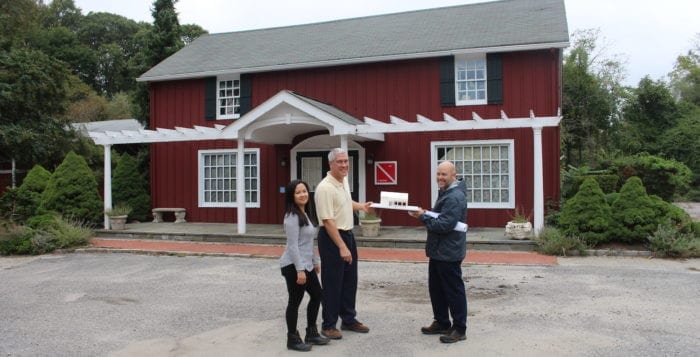In a politically charged time, race is seen as a third-rail issue, one that if touched leads to political headache in the case of a politician or a rough time around the holiday dinner table for everyday folks.
Which is why Elaine Gross, president of Syosset-based ERASE Racism, which wishes to examine and make meaningful change to race relations in New York, said Long Island was the perfect time and place to start meaningful conversations about race and racism, both in the overt and covert displays of prejudice.
“Even though we are becoming more diverse, that doesn’t mean we have what we want going on in our schools,” Gross said. “Long Island is home to 2.8 million people so we’re not a small place, but tremendously fragmented.”
The nonprofit, which was originally founded in 2001, made its first stop at Hilton Garden Inn, Stony Brook University Nov. 29 during a five-series Long Island-wide tour called How Do We Build a Just Long Island? The mission is to start a dialogue about meaningful change for race relations in both Suffolk and Nassau counties. Four panelists, all professors and graduate students at Stony Brook, spoke to a fully packed room about their own research into the subject and took questions from the audience on how they could affect change in their own communities.
Christopher Sellers, history professor and director of the Center for the Study of Inequalities, Social Justice, and Policy, has studied what he described as “scientific racism,” of people who look at the superiority and inferiority of other races as an objective truth, an idea that was born during the enlightenment and colonial period used to justify conquering nations overseas. It’s a form of understanding identity that lives on in many people, Sellers said.
“It’s as old as western society itself,” he said.
Race is an important issue in a county that is very segregated depending on the town and school district. An image created by the nonprofit and compiled with information from the New York State Department of Education shows a district such as Port Jefferson is made up of 80 percent white students, while in the Brentwood school district 79 percent of students are Latino and 12 percent are black.
Panelists argued that racism exists and is perpetuated through local policy. Abena Asare,
assistant professor of Modern African Affairs and History said that racism currently exists in the segregated schools, in lack of public transportation, zoning laws and other land-use policies created by local governments.
“Many of the policies on our island that insulate and produce structural racism are based on a false narrative on what Long Island was, who it is was for, and the fear of where it is going,” Asare said. “Creating new futures requires that we expose the version of the past that justifies or separates an unequal status quo.”
Crystal Fleming, an associate professor of sociology at Stony Brook, spoke about how historically the idea of white supremacy is ingrained in America’s social consciousness, that lingering ideas of one race’s entitlement to security and citizenship over other races have helped perpetuate racist ideas and policy.
“When we talk about systemic racism, it’s not black supremacy, it’s not Native American supremacy, it’s not Asian supremacy, it’s white supremacy,” Fleming said. “We need to be brave and talk frankly about these matters.”
Miriam Sarwana, a graduate student in psychology at Stony Brook, said after the civil rights movement of the 1960s racism did not simply die, but it became subtle, only used in the safety of the home. This is compounded by the lack of interaction between races on a daily basis.
“These biases are influenced by the social, societal and cultural [elements] in our lives, and can be influenced both directly and indirectly,” Sarwana said. “A white adult has little or no interaction with African-Americans, and then starting childhood this person may be exposed to negative images of African-Americans.”
The panelists said that the extreme segregation in school districts has resulted in an even greater disparity of resources and attention for nonwhite races. The issue, Asare said, after the forum, was that the 125 public school districts on Long Island have remained insular, leading to communities becoming disparate and inclusive. She said the best way to deal with this is to consolidate school districts, even along town lines, which could lead to bigger savings for school districts, more resources to less-served districts and allow for better cross-pollination of races between schools.
“The fact that those types of discussions are not normally occurring here speaks to a larger issue, that segregation works for a lot of people around Long Island,” Asare said.
The final Erase Racism forum in this series will be held Dec. 10 at the Radisson Hotel in Hauppauge at 6 p.m. Visit www.eraseracismny.org for more information or to register for the event.





















